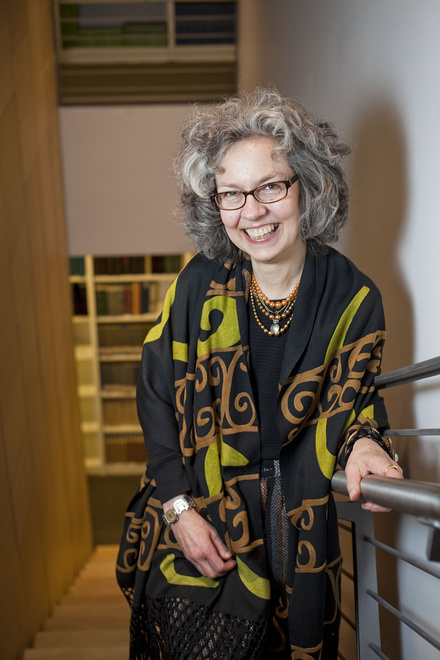
What first drew you to work for BCG when it was such a new institution?
I had recently left my position as Assistant Curator in the Costume Institute after almost 8 years, where I had done some occasional teaching. The BGC program really appealed to me and the director was interested in offering fashion history as an area of study to students. It was a wonderful and very fortuitous opportunity to remain in the field, especially at a time when fashion history was beginning to be recognized as a serious subject by other disciplines.
What are some of the biggest changes in the institution that you have seen over the past 25 years?
Certainly, the size and scope of the faculty and, by extension, the range of course offerings and approaches. In 1994, when I taught my first course, I believe the faculty was about half the size it is now. My own repertoire has expanded as well. I was an eighteenth-century specialist in the Costume Institute, but for many years now I have taught nineteenth- and twentieth-century fashion, modern textiles, a course on fashion and theatre, and, most recently, The Green Hat: Fashion in Word and Image with Freyja Hartzell. Public programs have also grown significantly as have the various lecture series, hosted by the faculty, so our outreach has increased dramatically.
As one of the professors that has taught here the longest, what is it about BGC that still makes you excited to come into work every day?
I still very much enjoy my interactions with engaged students in the classroom. To be able to study and continue to learn about my passion with those who share that passion remains exciting and rewarding. I have also developed close friendships with many of my colleagues over the years, which has been extremely important to me both personally and in terms of my intellectual growth.
What are two or three of your proudest accomplishments at BGC?
My 2012 focus gallery exhibition, Staging Fashion, 1880-1920: Jane Hading, Lily Elsie, Billie Burke. It gave me the opportunity to share an aspect of my interest in fashion history with students, the BGC community and, of course, the public. I am also extremely proud of the work that my three doctoral students—Maude Bass-Krueger, William DeGregorio, and Rebecca Perry—contributed to this project, particularly the book. Another accomplishment has been teaching, advising, and mentoring MA and PhD students—the list is long!—who focused on fashion and textile history and who are now working in the field and making their own contributions.
What are your hopes for BGC’s next 25 years?
I hope the BGC remains committed to maintaining its leadership as an institution that privileges the study of objects through exposure to those objects. I come from an object-based background, and I can attest to my students’ consistent appreciation when they have been able to handle and closely examine garments and textiles during our class field trips. (This happens primarily at Cora Ginsburg, where I also work.) It is a sensory learning experience that cannot be achieved in any other way and it is imperative in order to foster a true love for the materiality of dress and textiles.
Anything else you would care to share?
Vive la mode!
